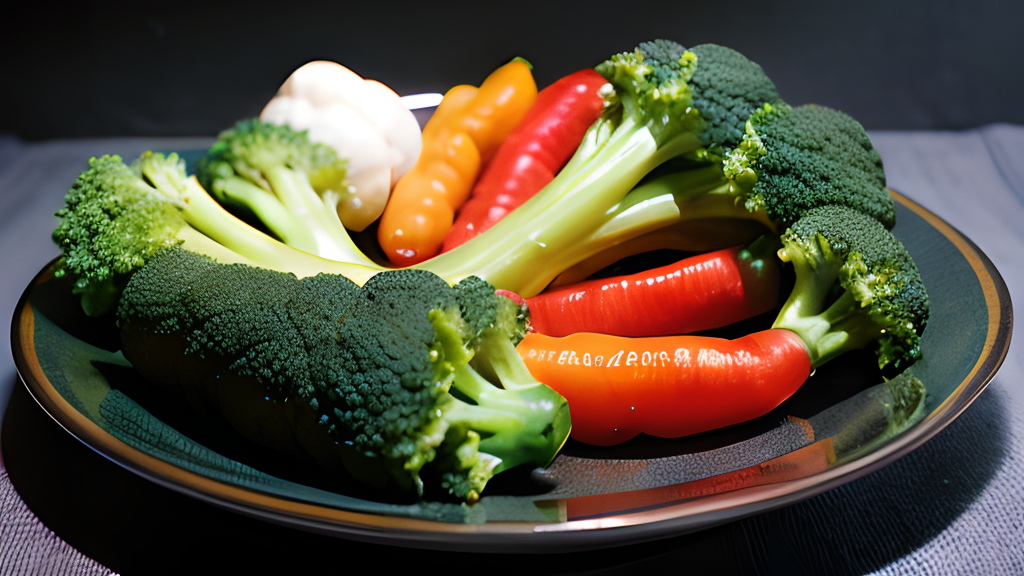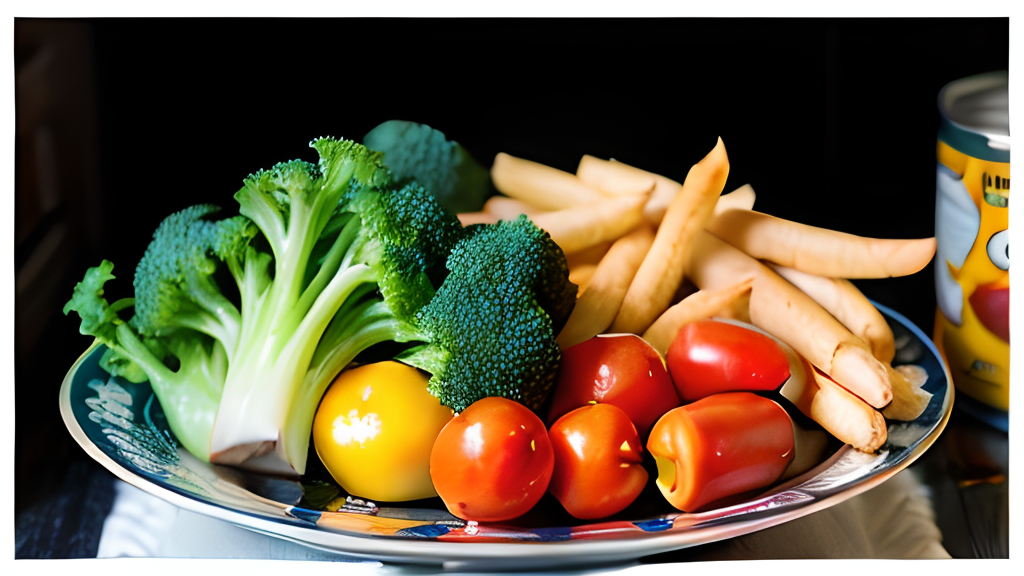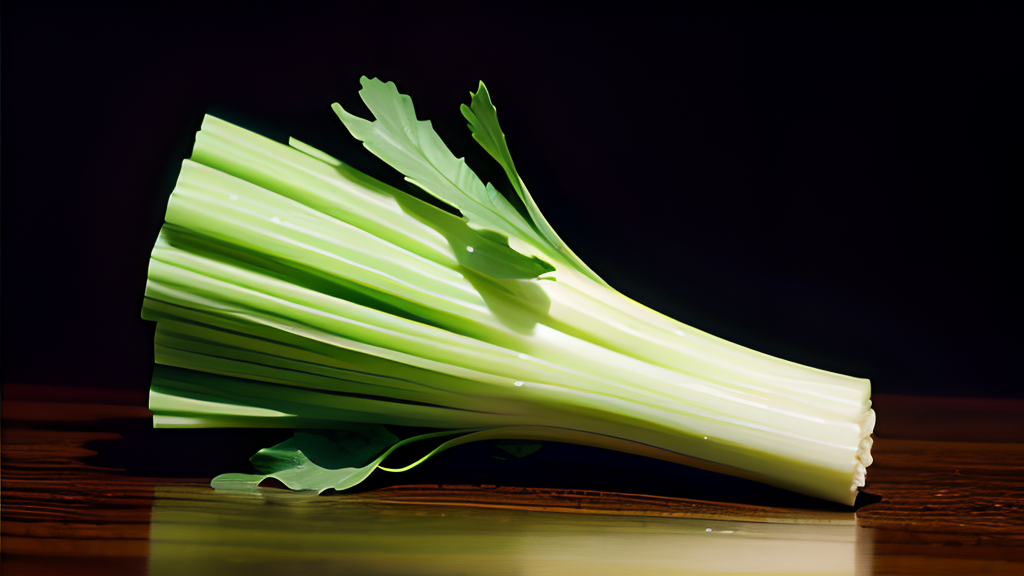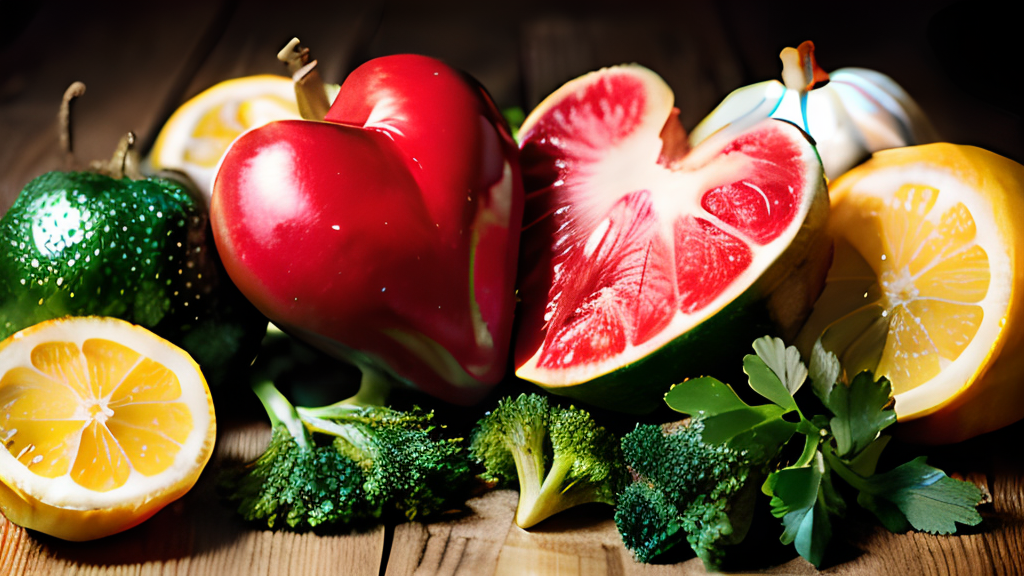
A balanced diet plays a crucial role in maintaining good health and providing the body with essential nutrients.
While fruits and vegetables are known for their nutritional benefits, some vegetables may be lacking in certain key nutrients.
In this article, we will explore the top 10 nutrient-lacking vegetables and discuss their importance in our diet.
By understanding the nutritional profiles of these vegetables and finding creative ways to incorporate them into our meals, we can ensure that we are getting the necessary nutrients for optimal health.
Importance of a balanced diet and essential nutrients

A balanced diet is crucial for maintaining good overall health and wellbeing.
It provides the necessary nutrients that our bodies need to function optimally.
Essential nutrients, such as vitamins, minerals, and antioxidants, play a vital role in supporting various bodily functions, including growth and development, metabolism, and immune system function.
Incorporating nutrient-rich vegetables into our diets ensures that we receive these essential nutrients and helps prevent nutrient deficiencies.
By consuming a balanced diet rich in a variety of vegetables, we can promote optimal health and reduce the risk of chronic diseases.
Overview of the top 10 nutrient-lacking vegetables

When it comes to maintaining a balanced diet and ensuring that your body receives the essential nutrients it needs, vegetables play a crucial role.
Unfortunately, some vegetables are often lacking in certain nutrients that are vital for our health.
In this article, we will delve into the top 10 nutrient-lacking vegetables and explore the specific nutrients they lack.
By understanding these deficiencies, you can make informed choices about incorporating other nutrient-rich vegetables into your diet to ensure optimal health and well-being.
Spinach

Spinach is a leafy green vegetable that is packed with essential nutrients.
It is an excellent source of vitamins A, C, and K, as well as iron, calcium, and folate.
These nutrients play crucial roles in promoting healthy vision, boosting the immune system, maintaining bone health, and supporting fetal development.
Incorporating spinach into your diet is easy.
You can add it to salads, smoothies, soups, or sauté it as a side dish.
Whether raw or cooked, spinach is a nutrient-rich vegetable that offers numerous health benefits.
Nutritional benefits of spinach
Spinach is a powerhouse of nutrients that offers a multitude of health benefits.
It is an excellent source of vitamins A, C, and K, as well as folate, iron, and calcium.
These nutrients play vital roles in maintaining eye health, boosting the immune system, promoting strong bones, and improving blood clotting.
Additionally, spinach contains antioxidants that help to combat inflammation and protect against certain chronic diseases.
Including spinach in your diet can be a simple and effective way to enhance your overall well-being.
Ways to incorporate spinach into your diet
There are various ways you can incorporate spinach into your diet to ensure you benefit from its nutritional value.
You can add raw spinach leaves to your salads or sandwiches, or blend it into smoothies for a healthy and refreshing drink.
Another option is to sauté spinach with garlic and olive oil as a tasty side dish.
You can also use spinach as a filling for omelettes, wraps, or pasta dishes.
By being creative with your recipes, you can easily incorporate spinach into your daily meals and enjoy its numerous health benefits.
Broccoli

Broccoli, a nutrient-rich vegetable, is packed with essential vitamins and minerals.
It is a great source of vitamin C, vitamin K, folate, and fiber.
These nutrients contribute to various health benefits, such as boosting immunity, promoting healthy digestion, and supporting bone health.
Incorporating broccoli into your diet is easy and delicious.
It can be steamed, roasted, or sautéed, and can be added to salads, stir-fries, or pasta dishes.
Make sure to include this versatile vegetable in your meals to reap its numerous nutritional rewards.
Important nutrients found in broccoli
Broccoli is a nutrient powerhouse, packed with essential vitamins and minerals.
One of the key nutrients found in broccoli is vitamin C, which helps boost the immune system and promotes collagen production.
It also contains vitamin K, which supports bone health and blood clotting.
Additionally, broccoli is a good source of fiber, folate, potassium, and manganese.
These nutrients contribute to overall health and wellbeing.
Incorporating broccoli into your diet can help ensure you’re getting these important nutrients for optimal health.
Creative and tasty broccoli recipes
Broccoli is a versatile vegetable that can be enjoyed in various delicious ways.
One creative recipe is broccoli fritters, where grated broccoli is mixed with eggs, flour, and seasonings before being pan-fried to perfection.
Another tasty option is roasted broccoli with parmesan cheese, garlic, and lemon zest.
This gives the broccoli a savory and tangy flavor that is sure to impress.
Lastly, you can try making a creamy broccoli soup by blending steamed broccoli with vegetable broth and adding spices like thyme or nutmeg.
These recipes showcase the culinary possibilities of broccoli while ensuring you get all its nutritious benefits.
Carrots

Carrots, a popular root vegetable, are known for their vibrant orange color and sweet flavor.
They are an excellent source of essential nutrients that promote good health.
Carrots are rich in beta-carotene, which is converted into vitamin A in the body.
Vitamin A is vital for eye health and immune function.
Additionally, carrots contain fiber, vitamin K, potassium, and antioxidants.
Consuming carrots regularly can enhance digestion, improve heart health, and support skin health.
Incorporate this nutrient-packed vegetable into your diet to reap its numerous benefits.
Nutrients present in carrots and their benefits
Carrots are an excellent source of various nutrients that are essential for maintaining good health.
They are particularly rich in beta-carotene, which is converted to vitamin A in the body.
Vitamin A is crucial for healthy vision, immune function, and cell growth.
In addition to beta-carotene, carrots also contain vitamins C, K, and B6, as well as minerals like potassium and fiber.
These nutrients contribute to improved digestion, a strengthened immune system, and healthier skin.
Including carrots in your diet can support eye health, boost collagen production for younger-looking skin, and promote heart health.
Consuming carrots regularly can also help maintain a healthy weight due to their low calorie and high fiber content.
Add some grated carrots to your salads or stir-fries, enjoy them in raw form as a crunchy snack with hummus or dip, or incorporate them into soups and stews to reap the numerous benefits they offer.
Delicious ways to enjoy carrots in your meals
Carrots are not only packed with nutrients, but they can also add a burst of flavor and vibrant color to your meals.
Enjoy carrots in your meals by incorporating them into a variety of dishes.
Grate carrots and add them to salads for a refreshing crunch.
Roast carrots with a drizzle of olive oil, honey, and spices for a caramelized sweetness.
You can even make carrot fries by cutting them into thin strips and baking them until crispy.
Get creative and experiment with different recipes to make the most out of this nutrient-rich vegetable.
Tomatoes

Tomatoes are a versatile and nutrient-packed vegetable that should be a staple in any balanced diet.
Packed with essential vitamins such as vitamin C, vitamin A, and vitamin K, tomatoes offer numerous health advantages.
They are also a great source of antioxidants, such as lycopene, which has been linked to reducing the risk of chronic diseases like heart disease and certain types of cancer.
With their vibrant color and refreshing taste, there are countless innovative ways to incorporate tomatoes into your meals for a boost of nutrition.
Essential nutrients and health advantages of tomatoes
Tomatoes are a versatile and nutrient-rich vegetable that offers numerous health benefits.
They are packed with essential nutrients such as Vitamin C, potassium, and lycopene, a powerful antioxidant.
These nutrients promote healthy skin, boost the immune system, and reduce the risk of chronic diseases like heart disease and certain cancers.
Tomatoes also contain fiber, which aids in digestion and promotes a healthy weight.
Incorporating tomatoes into your diet can be as simple as adding them to salads, sandwiches, or even enjoying them in the form of a refreshing tomato soup.
Innovative ways to include tomatoes in your diet
Innovative ways to include tomatoes in your diet can make your meals exciting and flavorful.
One idea is to use tomatoes as a base for homemade salsa or bruschetta topping, adding freshness and a burst of flavor.
You can also try roasting tomatoes to bring out their sweetness, and use them in pasta dishes or as a topping for grilled vegetables.
Another option is to blend tomatoes into a gazpacho soup or incorporate them into a healthy smoothie for a refreshing twist.
Get creative and experiment with the versatility of tomatoes in your recipes!
Green Peas

Green peas, also known as garden peas, are a nutrient-dense vegetable that provides numerous health benefits.
They are rich in essential vitamins like vitamin K, vitamin C, and folate.
Green peas also contain important minerals such as iron and potassium.
Moreover, they are packed with dietary fiber and plant-based protein.
Adding green peas to your diet can support digestive health, boost immunity, and aid in weight management.
Enjoy them steamed, added to soups or salads, or as a side dish for a nutritious meal.
Nutritional profile of green peas
Green peas pack a punch when it comes to their nutritional profile.
These small, vibrant vegetables are a great source of vitamins A, C, and K, as well as fiber and protein.
They are rich in antioxidants, which help combat free radicals and reduce inflammation in the body.
Additionally, green peas contain minerals like iron, potassium, and magnesium.
Including green peas in your diet can provide numerous benefits for your overall health and well-being.
Recipes that make green peas a delightful addition to meals
Green peas are not only packed with nutrients, but they also add a burst of flavor to any meal.
One delicious recipe is creamy pea soup, where green peas are blended with vegetable broth, onions, and garlic until smooth.
Another option is roasted peas, where the peas are tossed in olive oil, salt, and pepper, then roasted until crispy.
Sautéed peas with mushrooms and garlic make a perfect side dish, adding both color and texture to your plate.
Whether you enjoy them in soups, salads, or stir-fries, green peas are sure to elevate the taste of your meals.
Bell Peppers

Bell Peppers are vibrant and versatile vegetables that come in a variety of colors, including red, yellow, and green.
These peppers are low in calories but rich in nutrients, making them a great addition to a balanced diet.
They contain essential vitamins like vitamin C, vitamin A, and vitamin K, as well as antioxidants that promote good health.
Bell peppers can be enjoyed raw in salads or cooked in stir-fries, soups, and stuffed dishes, offering a delicious and nutritious way to enhance your meals.
Important nutrients found in bell peppers
Bell peppers are not only vibrant and flavorful, but they are also packed with essential nutrients.
These colorful vegetables are a rich source of Vitamin C, Vitamin A, and Vitamin B6.
Additionally, they contain significant amounts of fiber and potassium.
Bell peppers also provide antioxidants like beta-carotene and lutein, which help protect cells from damage caused by harmful free radicals.
Including bell peppers in your diet can contribute to a healthy immune system, improved digestion, and overall wellbeing.
Exciting ways to incorporate bell peppers into your dishes
Bell peppers are not only colorful and flavorful, but they also add a dose of nutrients to your dishes.
There are various exciting ways to incorporate bell peppers into your meals.
One idea is to stuff them with a delicious filling mixture of rice, meat, and herbs.
Another option is to slice them and roast them with olive oil, salt, and pepper, creating a caramelized and smoky flavor.
You can also add bell peppers to stir-fries, fajitas, salads, or blend them into sauces and dips for an extra burst of flavor.
Get creative and experiment with different dishes to enjoy the versatility of bell peppers.
Cauliflower

Cauliflower: A Nutrient-Packed Vegetable
Cauliflower is a versatile vegetable that is not only delicious but also packed with essential nutrients.
This cruciferous vegetable is an excellent source of vitamin C, providing more than 75% of the recommended daily intake in just one serving.
It is also rich in fiber, which promotes digestive health and helps maintain healthy body weight.
Additionally, cauliflower contains important minerals like potassium and manganese.
Incorporating cauliflower into your diet can be easy and enjoyable, as it can be roasted, mashed, or even used as a low-carb rice alternative.
Significant nutrients in cauliflower and their health benefits
Cauliflower is a nutrient-rich vegetable that offers numerous health benefits.
It is a great source of vitamin C, which helps boost the immune system and promotes collagen production for healthy skin.
Cauliflower also contains vitamin K, which is essential for blood clotting and bone health.
Additionally, it provides a good amount of fiber, which aids in digestion and helps maintain a healthy weight.
Incorporating cauliflower into your diet can support overall well-being and contribute to a balanced nutrient intake.
Tasty cauliflower recipes
Cauliflower, known for its versatility and mild flavor, can be transformed into delicious dishes that are both nutritious and satisfying.
One popular recipe is cauliflower “rice,” where the florets are grated or processed into tiny grains resembling rice.
This can be used as a base for stir-fries or as a low-carb alternative to traditional rice.
Another crowd-pleaser is buffalo cauliflower bites, where florets are coated in a spicy batter and baked until crispy.
These tasty recipes help make cauliflower an enjoyable addition to any meal.
Celery

Celery is a nutrient-rich vegetable that offers several health benefits.
It is packed with essential vitamins and minerals, including vitamin K, vitamin C, and potassium.
Additionally, celery is low in calories and rich in antioxidants.
It can help improve digestive health, reduce inflammation, and support heart health.
Incorporating celery into your meals can be as simple as adding it to salads or using it as a crunchy snack with dips.
With its impressive nutritional profile, celery is a great addition to any balanced diet.
Nutritional value of celery and its advantages
Celery is an often overlooked vegetable, but its nutritional value and advantages make it worthy of attention.
It is low in calories and packed with essential nutrients such as vitamin K, vitamin C, and potassium.
These nutrients contribute to bone health, immune function, and heart health.
Additionally, celery contains antioxidants that may help reduce inflammation and support digestion.
Incorporating celery into your diet can be as simple as adding it to salads, soups, or enjoying it as a crunchy snack.
Creative ideas to include celery in your meals
When it comes to incorporating celery into your meals, there are plenty of creative ideas to explore.
One popular option is to use celery as a crunchy and refreshing addition to salads.
You can chop it up and mix it with other vegetables and dressing for a satisfying side dish.
Another way to enjoy celery is by using it as a base for dips or spreads.
Simply blend it with ingredients like Greek yogurt or cream cheese for a flavorful dip that pairs well with crackers or sliced veggies.
Lastly, you can add celery to soups, stews, and stir-fries for added texture and flavor.
Get creative in the kitchen and discover new ways to include this nutrient-rich vegetable into your meals.
Conclusion

In conclusion, incorporating a variety of nutrient-rich vegetables into your diet is essential for maintaining good health and preventing nutrient deficiencies.
The top 10 nutrient-lacking vegetables discussed in this article, including spinach, broccoli, carrots, tomatoes, green peas, bell peppers, cauliflower, and celery, offer a wide range of important vitamins and minerals.
By trying out the delicious recipes and creative ideas mentioned, you can easily incorporate these vegetables into your meals and ensure you are getting the necessary nutrients to support your overall well-being.
Remember to prioritize a balanced diet to meet your nutritional needs.
Summary of the top 10 nutrient-lacking vegetables
The top 10 nutrient-lacking vegetables offer a range of health benefits and can be easily incorporated into your diet.
Spinach is rich in iron and calcium, while broccoli provides a good dose of vitamins A and C.
Carrots are packed with beta-carotene, and tomatoes are a great source of lycopene.
Green peas offer protein and fiber, while bell peppers provide vitamin C.
Cauliflower is low in calories but high in vitamin K, and celery is a hydrating vegetable with potassium.
Including these vegetables in your meals can help ensure you’re getting the essential nutrients your body needs.
Tips for ensuring you consume enough nutrients through vegetables
To ensure you consume enough nutrients through vegetables, it is important to prioritize variety in your diet.
Aim to include a diverse range of vegetables to obtain a wide array of essential nutrients.
Additionally, cooking vegetables lightly or opting for raw preparations can help preserve their nutrient content.
Be mindful of portion sizes and try to incorporate vegetables into every meal.
Lastly, consider incorporating nutrient-dense leafy greens such as spinach or kale as a base for salads or adding them to smoothies for an additional nutrient boost.






